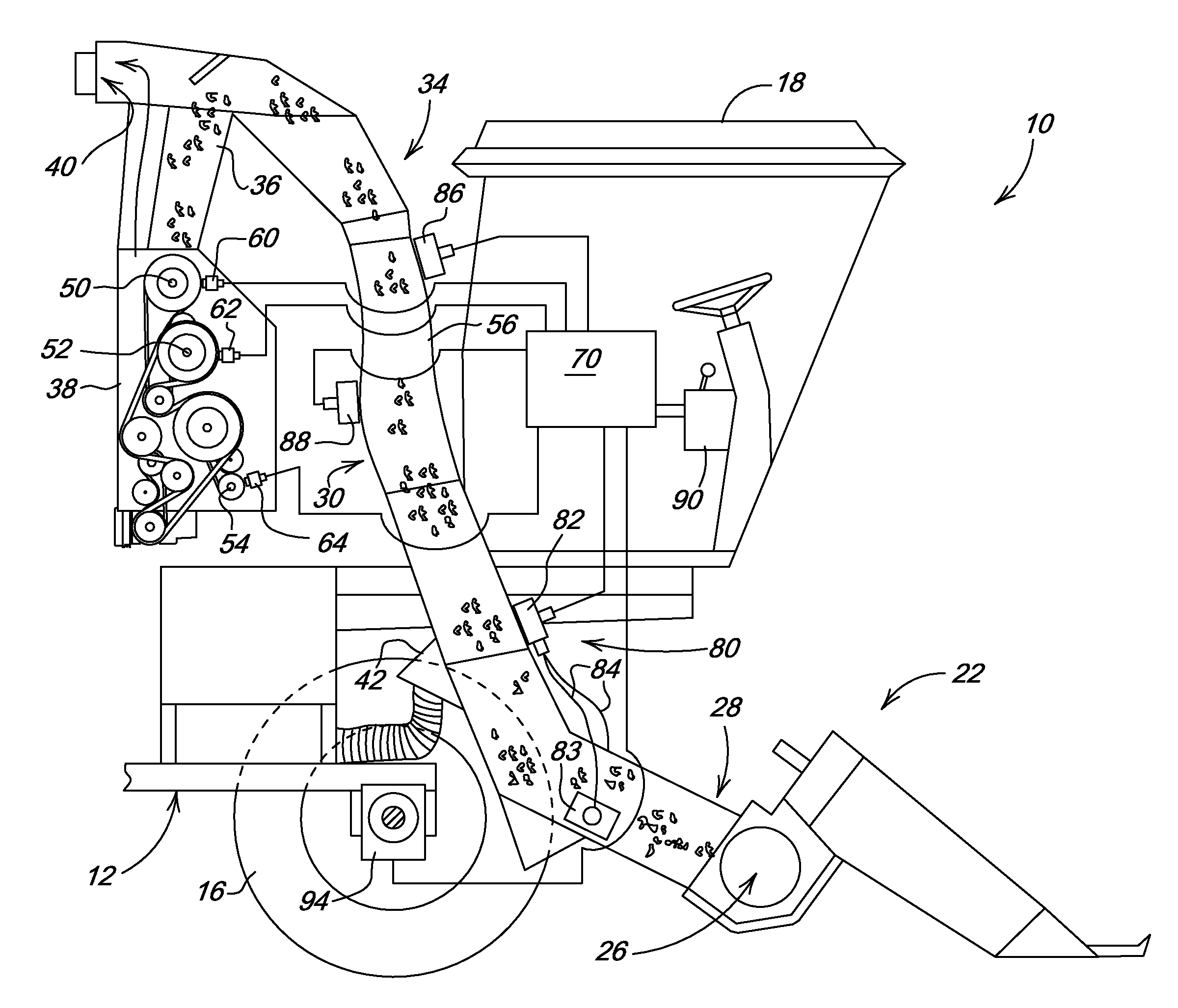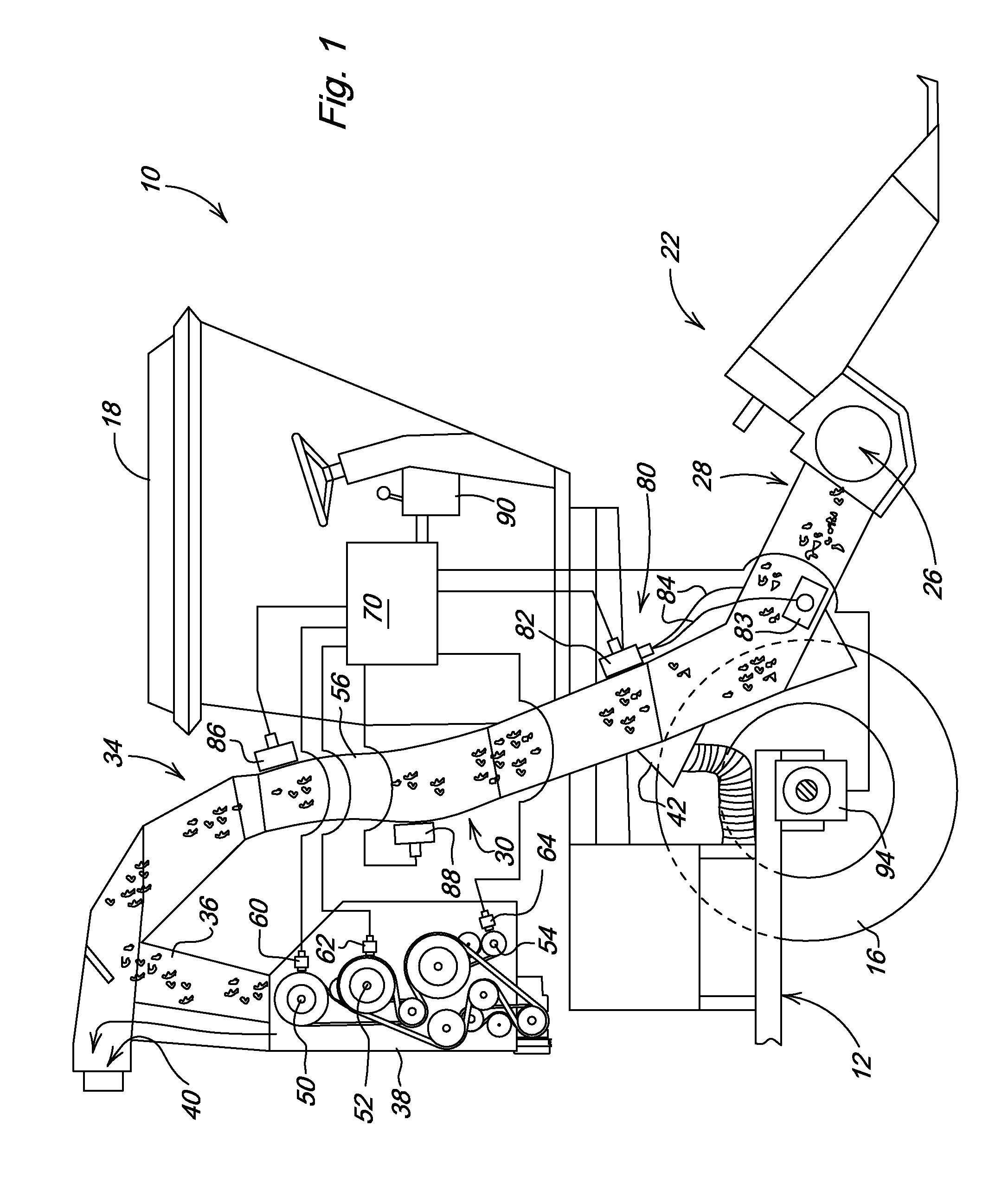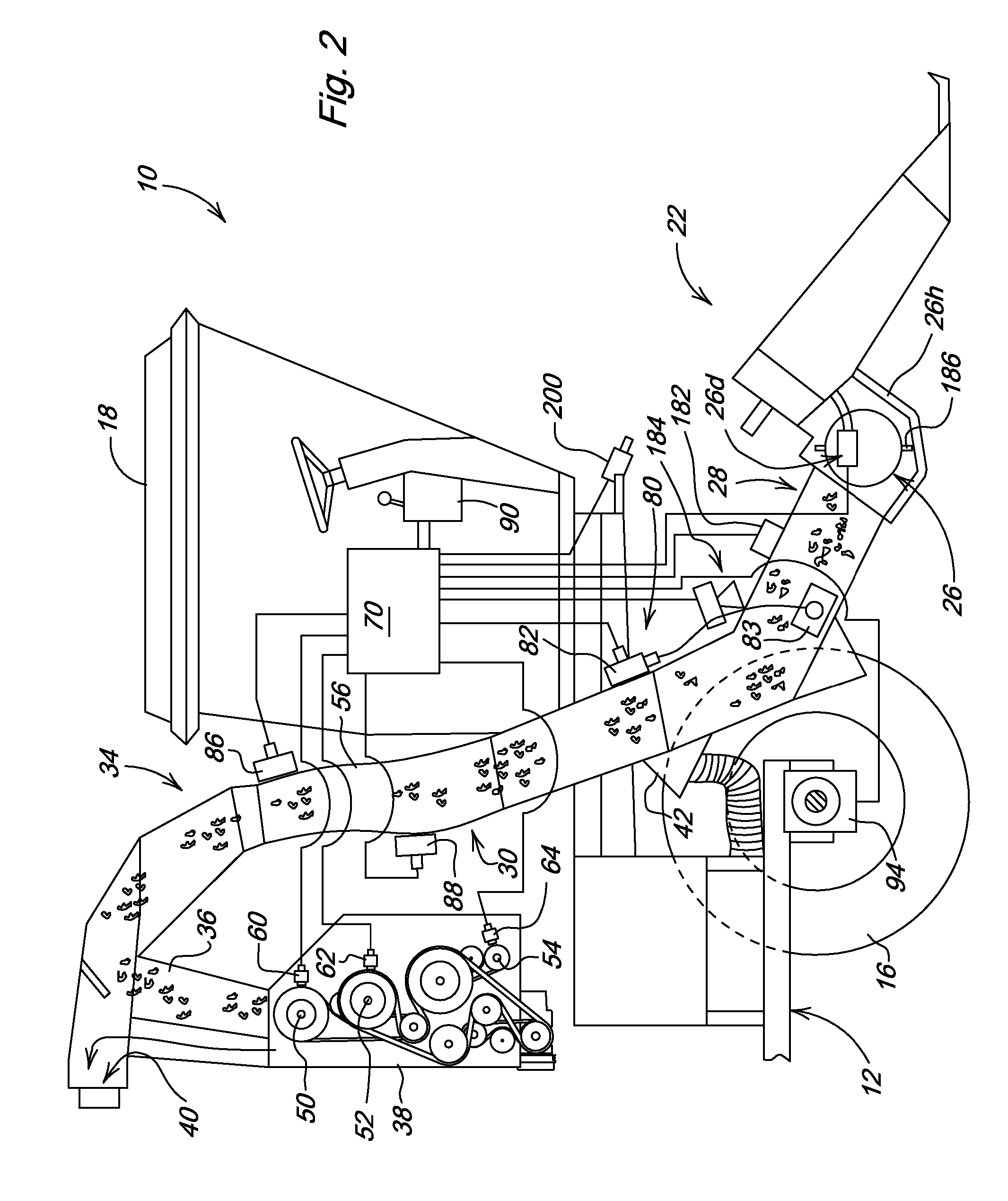Conveying duct monitor system for controlling harvester speed
a technology of duct monitor and harvester speed, which is applied in the field of agricultural harvester having air duct system, can solve the problems of typically limited capacity of the cleaner, achieve the effect of reducing the incidence of machine overload or under-capacity operation, facilitating calibration, and maintaining peak machine productivity
- Summary
- Abstract
- Description
- Claims
- Application Information
AI Technical Summary
Benefits of technology
Problems solved by technology
Method used
Image
Examples
Embodiment Construction
[0014]Referring now to FIG. 1, therein is shown a cotton harvester 10 having a main frame 12 supported for forward movement over the ground by forward drive wheels 16 and rear steerable wheels (not shown). A cab 18 is supported on the forward end of the frame 12. A lift frame is adjustably supported from the forward end of the frame 12 for mounting a conventional header 22 for stripping cotton material from rows of cotton plants. The header 22 includes a cross auger 26 for conveying stripped cotton and other material to a central outlet location which opens rearwardly into a separation duct 28.
[0015]Air duct structure 30 with an S-shaped configuration curves upwardly and rearwardly from the separation duct 28 to an upper separation grate area structure 34 which selectively directs conveyed material downwardly through an input duct 36 to an on-board processor such as a cotton cleaner 38 as shown in FIG. 1, or rearwardly to a basket or receptacle through an outlet area 40. The grate a...
PUM
 Login to View More
Login to View More Abstract
Description
Claims
Application Information
 Login to View More
Login to View More - R&D
- Intellectual Property
- Life Sciences
- Materials
- Tech Scout
- Unparalleled Data Quality
- Higher Quality Content
- 60% Fewer Hallucinations
Browse by: Latest US Patents, China's latest patents, Technical Efficacy Thesaurus, Application Domain, Technology Topic, Popular Technical Reports.
© 2025 PatSnap. All rights reserved.Legal|Privacy policy|Modern Slavery Act Transparency Statement|Sitemap|About US| Contact US: help@patsnap.com



